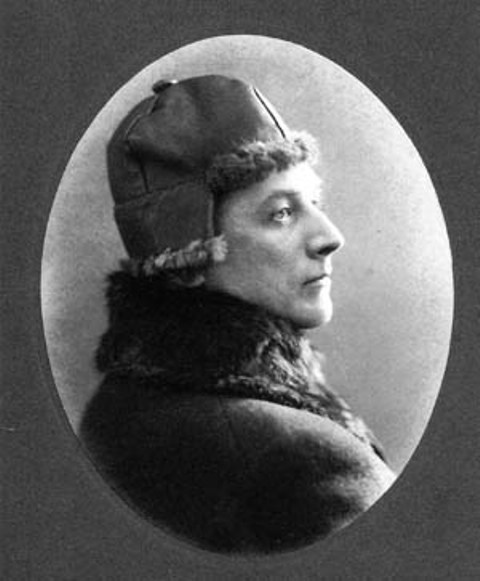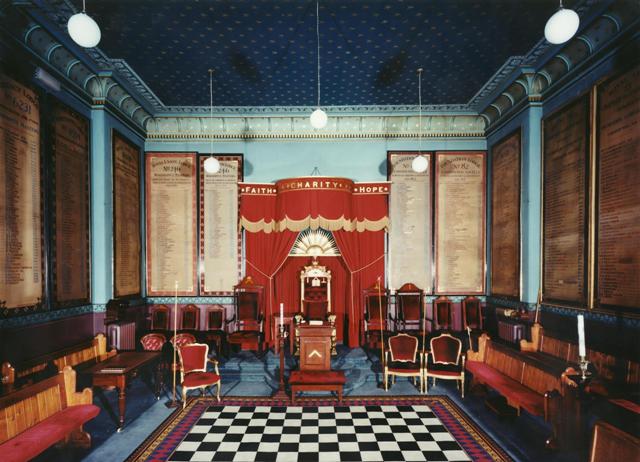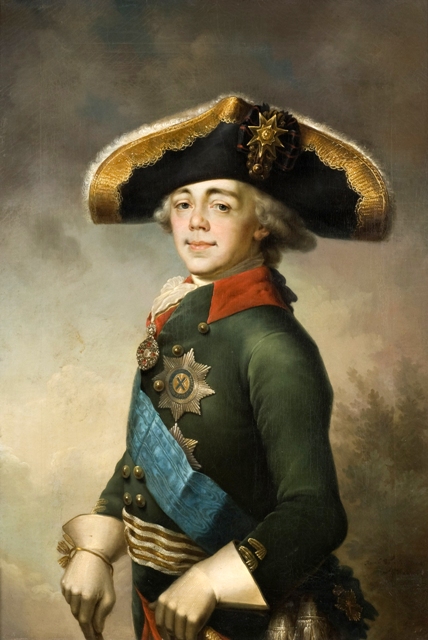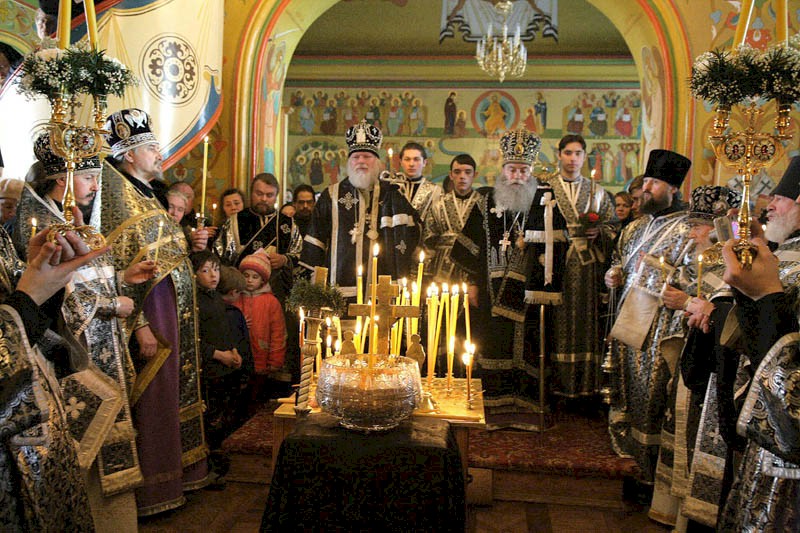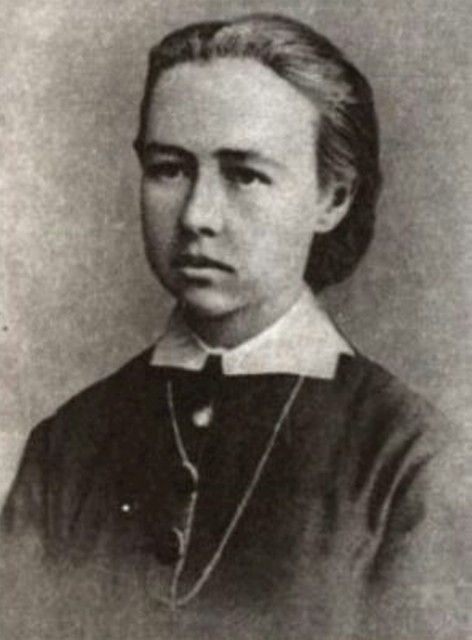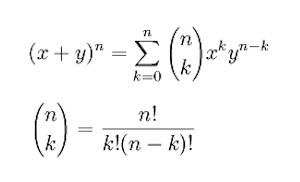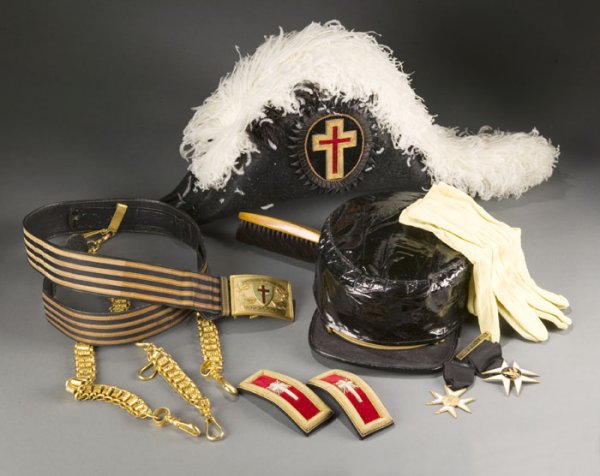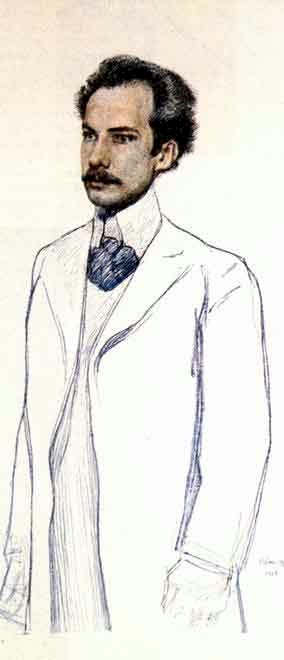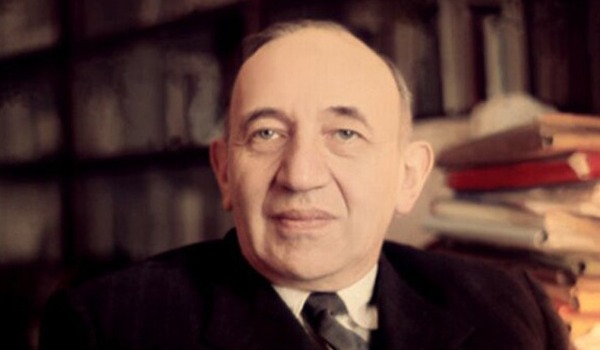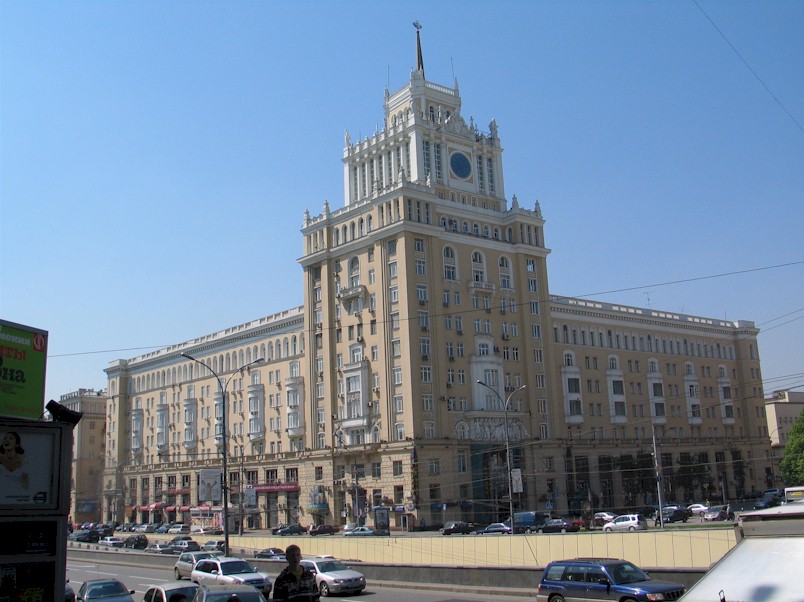18. Hapless Visitors (continued)
English > The novel > Annotations per chapter > Chapter 18 (continued)
A tailcoat or a black suit
On March 29, 1935, Bulgakov and his wife received an invitation to a reception which would be organised at the American ambassador's residence on April 23. The invitation had a note added: «A tailcoat or a black suit». In her diary, Elena Sergeevna Shilovskaya (1893-1970) wrote, «Misha was worried that the note was meant for him only. And I tried very hard to «create» a tailcoat quickly. But the tailor couldn't find the right fabric and he had to go in a suit».
This reception of April 23 inspired Bulgakov to describe the Great Ball of Satan in chapter 23. At the end of this reception, Bulgakov and his wife met the aforementioned Steiger for the first time: «We left at half past five in one of the cars of the embassy. With us in the car was a man we didn't know, but whom all Moscow knows. It seems his name is Steiger. He was sitting next to the driver and we were in the rear».
A black tailcoat and patent leather shoes are also part of the dress code for lodge brothers in Freemasonry. Later in the novel, at the Great Ball of Satan, all male guests will be dressed this way.
The interest of Bulgakov for Freemasonry can be explained by the fact that, in 1903, Afanasy Ivanovich Bulgakov (1859-1907), theologian and church historian, and the father of Mikhail Afanasievich, had written an article about Modern Freemasonry in its Relationship with the Church and the State, which was published in the Acts of the Theological Academy of Kyiv. Bulgakov refers more than once to Freemasonry in the novel.
Click here to read more on Freemasonry in The Master and Margarita
The stained glass of the big windows, the table covered with church brocade
Various houses in Moscow at the turn of the century had stained glass windows, though not the one Bulgakov actually lived in. The church-like atmosphere prepares the reader for the ball that takes place in chapter 23.
In 1926, two years before Bulgakov started writing The Master and Margarita, several Masons got arrested in the Soviet Union, mostly in Leningrad, where six Lodges were found to exist. One of those arrested, the lawyer Boris Viktorovich Kirichenko (1883-1941?), who lived under the pseudonym Boris Viktorovich Astromov.
In the documents of the secret police, the following description can be read: «The interior of the Masonic Lodge would be an asset to any given museum. We saw old portraits of the great Freemasons who belong in the ranks of the devotees of the genius. We saw secret 300 years old lamps, astral knots, the true rings of Cagliostro, Indian resins and Japanese incense, the bones keys of the Jesuits, Tangar sculptures, tapestries embroidered in blue gold, and even the original oath of allegiance to the Maltese knights, signed by Paul I.»
In an earlier version of The Master and Margarita, similar items filled the apartment on Sadovaya: lots of rugs, a golden chalice on a pedestal for the holy gifts, the Catholic black cassock of Woland, made of gold brocade with inverted crosses, and a cat with turquoise eyes sitting on a couch. And when Sokov, the buffet chief of the Variety Theatre, was leaving the apartment, he saw a temple where, instead of an icon, «a picture with the sacred content» was placed.
A church panikhida
A панихида [panikhida] is a special service of the Orthodox Church for commemoration of the dead, held between the actual death and the burial. A panikhida may be celebrated at any other convenient time as well, like on the sixth month anniversary of death or the annual anniversary of death. Many Orthodox Christians offer a panikhida every year on the anniversary of a beloved one’s death, celebrating in a certain sense their birthday into life eternal.
Brynza Feta cheese is never green in colour!
In the Russian text is written: «Брынза не бывает зеленого цвета!» or «Brynza has no green colour!». Bulgakov doesn’t use the word feta. Брынза [Brynza] is a goat’s or sheep milk cheese made mainly in Slovakia, Romania and Moldova, but also in Poland, Ukraine, Hungary and part of Moravia. This cheese is creamy, rich and salty, and ranges from soft and spreadable to semidry and crumbly.
They supplied sturgeon of the second freshness
Sturgeon of the second freshness or, in Russian: Осетрину прислали второй свежести [Osetrinu prislali vtoroy svezhesti] became one of the many popular sayings from Bulgakov's The Master and Margarita after its first publication. It was common in the Soviet Union to classify things into grades, in such way that the lesser categories could be given a positive name anyway.
In the 19th century there existed already expressions like «partially fresh eggs». In 1895, George du Maurier (1834-1896) had published a cartoon in the British humorous magazine Punch with the title True Humility. A timid-looking curate is taking breakfast in his bishop's house, but the egg he got isn’t really fresh. The Bishop says: «I'm afraid you've got a bad egg, Mister Jones». Apparently trying to avoid offence the curate replies: «Oh, no, my Lord, I assure you that parts of it are excellent!»
A cup of wine?
The interrogation of Sokov in the apartment of Woland also reminds us of the test undergone by a Freemason before he is being initiated as a Knight Kadosh or Knight of the White and Black Eagle, the 30th degree in the Ancient and Accepted Scottish Rite. All candidates for this degree are, among other things, judged on their attitude towards the Seven deadly sins: hubristic pride, greed, lust, malicious envy, gluttony, wrath, and sloth. Sokov, however, does not drink wine and does not seem to be interested in women. He does show signs of greed, though, and he became angry when Woland asked him if he was going to die. He thus failed the test and would not see the light.
The binomial theorem, you might think!
The expression бином Ньютона! [binom Newtona!] or Newton’s binomial theorem! became also very popular in Russian after the first publication of the novel. From what follows in the text, one can see that anything is easier than Newton’s binomial theorem, even the prediction of someone’s death.
Newton’s binomial theorem is a rather complex mathematical formula developed by Isaac Newton (1643-1727) giving the expansion of powers of sums. It specifies the expansion of a binomial of the form (x + y) to the exponent n as the sum of n + 1 terms of which the general term consists of a product of x and y with x raised to the exponent (n - k) and y raised to the exponent k and a coefficient consisting of n! divided by (n - k)!k! where k takes on values from 0 to n. If you were able to understand this explanation, you're a whole lot smarter than I am.
Hella
Hella is a female vampire. From his annotations we know that Bulgakov found her name in the Энциклопедический словарь Брокгауза и Ефрона [Entsiklopedesky slovar Brokhauza i Efrona] or the Brockhaus and Efron Encyclopedic Dictionary, a work containing 86 volumes, which can be considered as the Russian equivalent for the Encyclopaedia Brittanica. Under the keyword Чародейство [Charodeystvo] or magic or witchcraft, he found that Empuza, Lamia and Hella were the names given on the Greek island of Lesbos to premature girls who became vampires after their death.
In the earlier versions of The Master and Margarita, however, this рыжая голая [ryzhaya golaya] or red naked had a different name. She was called Marta.
The Russian psychologist and translator Valery Konstantinovich Mershavka (°1957) believes that this Marta was inspired by Sofia Lvovna Perovskaya (1853-1881). Perovskaya was a prominent member of the socialist revolutionary organisation Народная воля [Narodnaya Volya] or The Will of the People, and she participated in three attempts to murder Tsar Alexander II (1818-1881). The last attempt was successful, after which Perovskaya was sentenced to death by hanging. This way of executing could explain the багровый шрам [bagrovy shram] or the red scar in Marta's - and later Hella's - neck.
Click here to read more about Hella
A velvet beret with a dishevelled cock's feather
When the buffet master is leaving the apartment, he notices that he is wearing a velvet beret with a dishevelled cock's feather. That is significantly inferior to the «broad-brimmed black felt hat with a plume of ostrich feathers on the left» which, according to the rules, the Knights of Kadosh should wear during the masonic rituals.
The beret turned into a black kitten
For this detail Bulgakov was inspired by the novel Московский чудак [Moskovsky Chudak] or The Moscow Eccentric by the Russian writer Boris Nikolaevich Bugaev (1880-1934), who wrote under the pseudonym Andrei Bely.
In The Moscow Eccentric, the self-willed professor Korobkin puts a cat on his head instead of his fur beret. The prototype of professor Korobkin's character was Bely's own father, Nikolai Vasilyevich Bugaev (1837-1903), who was a prominent Russian mathematician. Nikolai Bugaev was a memorable character with a life full of scandals. He was not, it is said, much admired for his looks, but his wife was brilliant, beautiful, and rich, and the Bugaevs were socially prominent.
Professor Kuzmin
Bulgakov took the name Kuzmin from Vasily Ivanovich Kuzmin (1851-1928), a Russian surgeon and professor at the universities of Moscow and Kazan who, at the end of his career, had opened a private practice in Sadovaya Kudrinskaya no. 29, near the Patriarch's pond. Many sources see him as the real prototype for the professor in The Master and Margarita, and introduce him as «one of the doctors who unsuccessfully treated Bulgakov at the end of 1939». But that is impossible, because Vasily Ivanovich Kuzmin died more than 10 years before.
The real life prototype for the Professor Kuzmin in the novel was Professor Miron Semyonovich Vovsi (1897-1960), a specialist in kidney and lung diseases. Vovsi had got his doctor's degree in 1919 at the Medical Faculty of theMoscow State University. He was known for not always paying attention to medical ethics, especially in expressing his diagnosis. After he had examined Bulgakov on September 17, 1939, he immediately told Elena Sergeevna that Bulgakov would die within three days. Bulgakov would die only seven months later, but he couldn't stop thinking of the meeting with Vovsi, and on January 15, 1940, he dictated the scene of the buffet master of the Variety Theatre and his meeting with Professor Kuzmin to his wife Elena Sergeevna.
A small white house
The drugstore mentioned in The Master and Margarita belonged to a certain Rubanovski and was situated in Bolshaya Sadovaya ulitsa no. 1. The house in which Bulgakov situates the cabinet of doctor Kuzmin was a little further, in no. 5, which is where Elena Sergeevna Shilovskaya (1893-1970), Bulgakov's third wife, lived. Both buildings were torn down when the Hotel Pekin, one of Moscow's biggest hotels, was built. The real doctor Kuzmin lived in Kudrinskaya ulitsa no. 28.
Professor Bouret
I don’t know (yet) if there exists a real prototype for the professor Bouret character. In Michael Glenny's translation he's called Burye.
three labels from bottles of Abrau-Durso wine
Abrau-Durso is a city in the Novorossiysk region in Russia where, since 1870, champagne and wines are produced. The vineyards are situated on the coast of the Black Sea.
It was prince Lev Sergeevich Golitsyn (1845-1916) who brought to Russia the recipe of champagne discovered 200 years earlier by the monk Dom Pierre Pérignon (1638-1715). Golitsyn started the production of it in Abrau Durso.
On July 2, 2021, the Russian President Vladimir Vladimirovich Putin (°1952) hijacked rather shamelessly the name champagne with a strange law. Despite international patent protection, only wines produced in Russia may bear the name шампанское (shampanskoye] or champagne. Wines of foreign origin, including the genuine French champagne, may only be labeled игристое вино [gristoye vino] or sparkling wine.
The French translator Claude Ligny seemed very far-sighted in this regard. He translated Bulgakov's words три этикетки с бутылок «Абрау-Дюрсо» [tri etiketi s butilok «Abrau-Durso»] or three labels from bottles of Abrau-Durso wine as trois étiquettes de bouteilles de champagne or three lables from bottles of champagne. The same remark also applies to the English translator Michael Glenny with three old champagne bottle labels instead and the Dutch translator Marko Fondse with drie champagne-etiketten van het merk «Abrau-Durso» or three labels from the champagne brand «Abrau-Durso».
«Hallelujah!»
This is the second appearance of this song in the novel. This charleston written by Vincent Youmans (1898-1946) appears three times in the novel.
Click here to hear and watch this charleston
Working it in syncopation
The word syncopation comes from the Greek verb συγκόπτω [synkopto], which means to abbreviate. In music, the term is used for a disturbance or interruption of the regular flow of rhythm or the placement of rhythmic stresses or accents where they wouldn't normally occur.
(I'm not joking!)
This is one of the few times that the narrator comments directly what's happening in The Master and Margarita. As if the reader, who swallowed decapitations, mass hypnoses and much more demonic things, would now, all of the sudden, not believe that a sparrow «shat in the presentation inkstand».
He called a leech bureau
The medicinal leech Hirudo medicinalis and its congeners Hirudo verbana, Hirudo troctina and Hirudo orientalis was used as a means of bloodletting. The leech was put on the skin and it sucked blood from the patient. Then the blood was pushed out of the leech to avoid it to become saturated. A diagnosis was made based on an analysis of the blood. In previous times, leeches could be freely bought in pharmacies. In some big American states and in Asia they are still used, albeit much less than in Bulgakov's time. Between 1829 and 1836, for example, 6 million leeches were used annually in hospitals in Paris, drawing nearly 85.000 kg of blood from patients each year.
Ironically, modern medicine again has a use for medicinal leeches. They produce a substance, the so-called hirudine, which is an effective means to reduce blood coagulation, to relieve pressure from pooling blood, especially after plastic surgery, and to stimulate circulation in reattachment operations for organs with critical blood flow, such as eye lids, fingers, and ears.
Previous page Annotations chapter 18
Share this page |
Chapters
- Introduction
- 1 Never Talk with Strangers
- 2 Pontius Pilate
- 3 The Seventh Proof
- 4 The Chase
- 5 There were Doings at Griboedov's
- 6 Schizophrenia, as was Said
- 7 A Naughty Apartment
- 8 The Combat between the Professor...
- 9 Koroviev's Stunts
- 10 News From Yalta
- 11 Ivan Splits in Two
- 12 Black Magic and Its Exposure
- 13 The Hero Enters
- 14 Glory to the Cock!
- 15 Nikanor Ivanovich's Dream
- 16 The Execution
- 17 An Unquiet Day
- 18 Hapless Visitors
- 19 Margarita
- 20 Azazello's Cream
- 21 Flight
- 22 By Candlelight
- 23 The Great Ball at Satan's
- 24 The Extraction of the Master
- 25 How the Procurator Tried...
- 26 The Burial
- 27 The End of Apartment No. 50
- 28 The Last Adventures of Koroviev...
- 29 The Fate of the Master and...
- 30 It's Time! It's Time!
- 31 On Sparrow Hills
- 32 Forgiveness and Eternal Refuge
- Epilogue
English subtitles

All films based on The Master and Margarita are subtitled in English, French, German, Dutch, Spanish and Italian.
Illustrations
Boris Viktorovich Astromov
Typical interior of a lodge
Paul I of Russia
A panichida in the orthodox church
True Humility, the cartoon of
George du Maurier
Sofia Lvovna Perovskaya
The binomial theorem
Attributes of a Knight of Kadosh,
with a black har with ostrich feathers
Andrei Bely
Miron Semyonovich Vovsi
The hotel Pekin with Bolshaya Sadovaya
at the left
